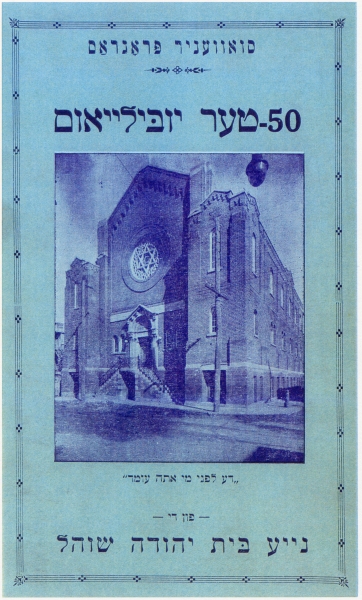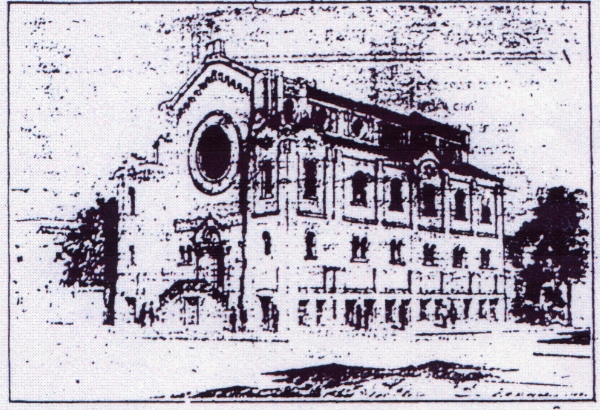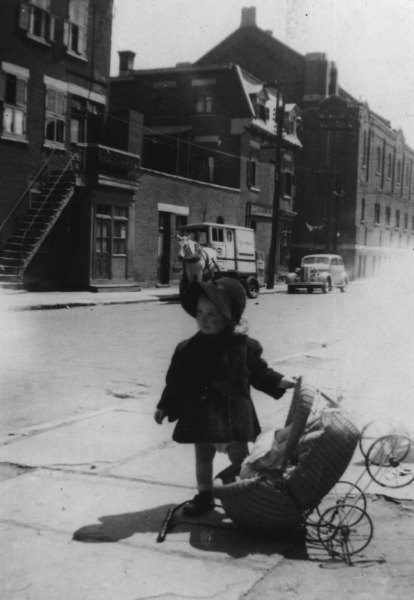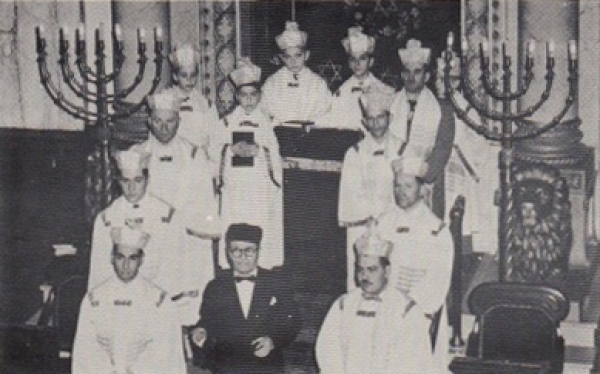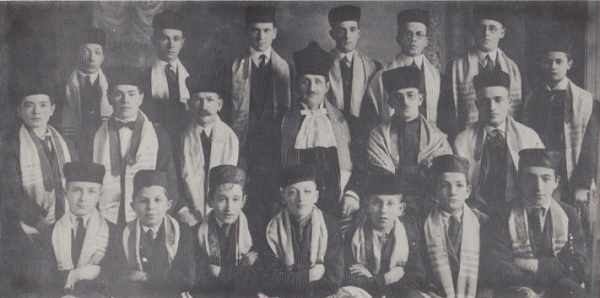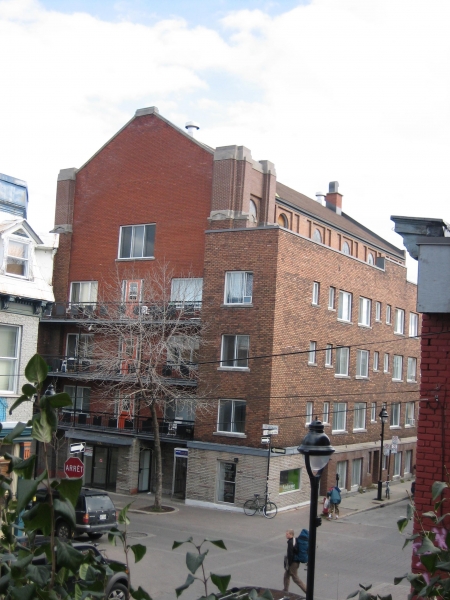Beth Yehuda
1923 - 1960
214 Duluth E.
(Traduction à venir)
Historic outlineThe 50th anniversary booklet of 1940 suggests that the congregation recognized its date of origin as being around 1890. According to this account, the Beth Yehuda originated with a small congregation of Hasidic followers of the Bohusher rabbi. They named the congregation Ohel Moshe after the Bohusher rabbi’s son. Worshipping at first in the home of Abraham Lang, the fledgling congregation rented space on Cadieux Street (now de Bullion) in 1902. It was with the purchase of a former theatre at 16 Lagauchetière East, that the congregation was renamed Beth Yehuda.
It was with great pride that the congregation celebrated the construction of an architecturally significant synagogue in 1923 at 210 Duluth East. Despite considerable and ongoing financial challenges, the congregation remained at that location until the late-fifties when it joined other immigrant congregations in forming the amalgamated Shomrim Laboker, Beth Yehuda, Shaare Tefillah, and, later on, Beth Hamedrash Hagadol Tifereth Israel, in the emerging Jewish neighbourhood of Snowdon at 6410 Westbury.
Witness to HistoryThe 50th anniversary publication features a history of the congregation written by a former president, Gidaliahu Michalovksy, based on “archives of the synagogue and recollections of older members and activists.” It can be said that a major theme of this account expressed the desire to acquire an appropriate building. With purchase and renovation of a former theatre, the congregation was satisfied in having created “quite a fine shul” which allowed the congregation to attract more members making it, by their own account, a focal point of the community. However, their records indicated a constant struggle to maintain the building. Nevertheless, an offer to purchase the building in 1914, prompted them to consider purchasing a lot further north in order to construct a new synagogue.
The completion of the synagogue on Duluth and Hotel de Ville in 1923 was naturally a momentous and proud moment for the congregation. “In that year the large and beautiful synagogue was built with all the improvements and with splendor and glory. Neither effort nor money was spared. We erected such a fine building that it was the pride of all Montreal Jews.” This moment of pride was soon to be deflated. Reflective of the financial difficulties which were to continue to plague the congregation, no sooner was it erected, than it was placed on a “sheriff’s sale,” due to unpaid bills to contractors, and rescued, thanks to the intervention of several generous members, a situation which reoccurred with alarming frequency. The congregation, burdened by an expensive building, was vulnerable not only to economic fluctuations, but to the constantly changing residential patterns of its members. When Mr. Michalovsky took office in 1929 he noted that even more serious than the stock market crash was the movement away from the neighbourhood of the wealthier members and seat holders who left the synagogue a “widow” with deficits, debts, and expenses.
The need to raise funds was an ongoing enterprise. One of the more successful fundraising strategies was the presentation of cantorial concerts. Well-known cantors, often from the United States, were invited to serve during the High Holidays. Often a concert would be presented before the holidays which would not only bring in revenue but encourage the purchase of seats. The performances of one rather young cantor proved to be particularly successful. Following a warning of a bank foreclosure in 1934, Mr. Michalovsky suggested that a cantor be hired for Saturdays and special concerts. When the first two cantors proved to be a disappointing draw, it was decided to bring in Cantor Shloimele, an eleven year old prodigy. The young cantor was engaged to sing for the High Holidays. “It was an event that brought a smile to the face of every member.” The enterprise with Cantor Shloimele brought in a profit of $4,000, four times the amount that had been raised in their previously most successful concert!
Physical descriptionThe building at 210 Duluth must have been a monumental structure in comparison with the modest stature of surrounding buildings. As most purpose-built synagogues of the period, it exhibits little architectural originality, modeled after European prototypes and perhaps even influenced by pre-existing church architecture of Montreal. Both the façade and rear were dominated by a circular window with and inscribed magen david. The central peak was topped with the tablets of the Ten Commandments and the side walls are lines will circular windows at the level of the women’s gallery.
The building was converted into apartments in the 1960s. The apartment building balconies, aluminum windows, and extended side wings overlay original architectural details. The former circular windows, which must have flanked the women’s gallery, are now boarded up, visible only from a distance. Inscribed in the rear of the building is a tracing in brick of the former circular window, which probably illuminated the space above the aron hakodesh.
Written by Sara Tauben
Links
Liens
Canadian Jewish Heritage Network - Beth YehudaTraces of the Past
Sources
Tauben, Sara Ferdman. "Aspirations and Adaptations: Immigrant Synagogues of Montreal, 1880s-1945." Masters Thesis. Concordia University, 2004.
Tauben, Sara Ferdman. Traces of the Past: Montreal's Early Synagogues. Montréal: Véhicule Press, 2011.
*Images courtesy of Canadian Jewish Congress Charitees Committee National Archive, Jewish Public Library, the private holdings of Eiran Harris, and Sara Tauben.


This project is funded in part by the Government of Canada.
Ce projet est financé en partie par le gouvernement du Canada.
Ce projet est financé en partie par le gouvernement du Canada.
This project is funded in part by the Government of Canada.
© 2011-2015 Museum of Jewish Montreal, All Rights Reserved.
Site by Air Code Design inc. ![]()
© 2011-2015 Musée du Montréal Juïf, Tous droits réservés. Site par Air Code Design inc. ![]()
